SAN FRANCISCO — Andrew Douglass shoved his garments and belongings into plastic trash luggage as 5 cops surrounded his encampment — a colorless grey tent overflowing alongside a bustling sidewalk within the gritty Tenderloin neighborhood, the place homeless individuals lie sprawled on public sidewalks, typically in drug overdoses.
Officers gave him a alternative: Go to a shelter or get arrested and cited for sleeping outdoors.
Douglass was attempting to determine what to do as he dismantled his tent. If he accepted short-term shelter, he’d threat lacking an essential appointment together with his avenue drugs case supervisor, who was on account of meet him at his tent within the morning to assist him safe a low-income housing unit with wraparound companies — and he nervous about shedding his drugs, ID, and different very important paperwork once more in one other homeless sweep.
Douglass, who didn’t have a working cellphone, knew if he moved from the place he’d slept for months, his case supervisor won’t be capable to discover him. “I’m so near getting housing. I should be right here tomorrow morning so I can attempt to get inside,” he mentioned, attempting to purpose with officers as he was handcuffed and arrested for unlawful lodging.
California, the epicenter of the U.S. homelessness disaster, is cracking down on individuals residing outdoors like by no means earlier than, taking an aggressive new stance to dismantling and clearing homeless encampments within the wake of a watershed U.S. Supreme Courtroom ruling in late June that makes it simpler for presidency companies to nice and arrest individuals for residing on streets and sidewalks, in broken-down automobiles, or inside public parks — even when there isn’t a shelter or housing out there. From San Francisco to Los Angeles, communities are launching cleanup operations, ratcheting up enforcement of current anticamping legal guidelines, and, in some locations, passing new legal guidelines to attempt to forestall individuals from residing outside.
On the bottom, well being care consultants and homeless service suppliers say the regulation enforcement crackdown is undercutting taxpayer investments in evidence-based remedy and housing companies which can be being deployed by cities and states across the nation as politicians look to the well being care system to aggressively transfer individuals off the streets.
The sweeps — which have taken off beneath Democratic Gov. Gavin Newsom, who issued an government order in late July requiring state companies to take away encampments and inspiring native governments to do the identical — have unleashed chaos for homeless individuals and are breaking essential connections with well being care suppliers, social service companies, and housing navigators attempting to assist them get wholesome and off the streets.
Newsom’s hard-line stance is undermining his signature Medicaid initiative, generally known as CalAIM, which dedicates $12 billion over 5 years partially to serving to homeless individuals obtain well being care, housing, and social companies. The experimental program, meant to stabilize probably the most weak and preserve low-income sufferers out of expensive institutional care in hospitals, jails, and nursing properties, for example, launched in early 2022 with backing from the Biden administration, and gives state and nationwide well being care funding to avenue drugs groups, hospitals, medical health insurance firms, group clinics, and different organizations to serve homeless individuals.
It comes as Newsom introduced this month that his well being secretary, Mark Ghaly, who has spearheaded the state’s infusion of social companies for homeless individuals into the well being care system, can be stepping down.
Encampment clearings are additionally upheaving long-standing federal well being insurance policies that present billions of {dollars} every year to avenue drugs suppliers, case administration groups, and front-line group clinic staff, together with by means of the nationwide “Well being Look after the Homeless” program, which can be aimed toward serving to homeless individuals get wholesome and navigate a path to everlasting housing.
Newsom has been emphatic that streets aren’t a house and that it’s unsafe to let individuals stay outdoors amid public well being hazards like rats, drug needles, and piles of trash. The second-term governor, who has threatened to withhold homelessness funding from communities that fail to indicate sufficient progress, argues that his insurance policies are serving to get individuals long-term housing and companies.
“There are merely no extra excuses,” Newsom mentioned in July.
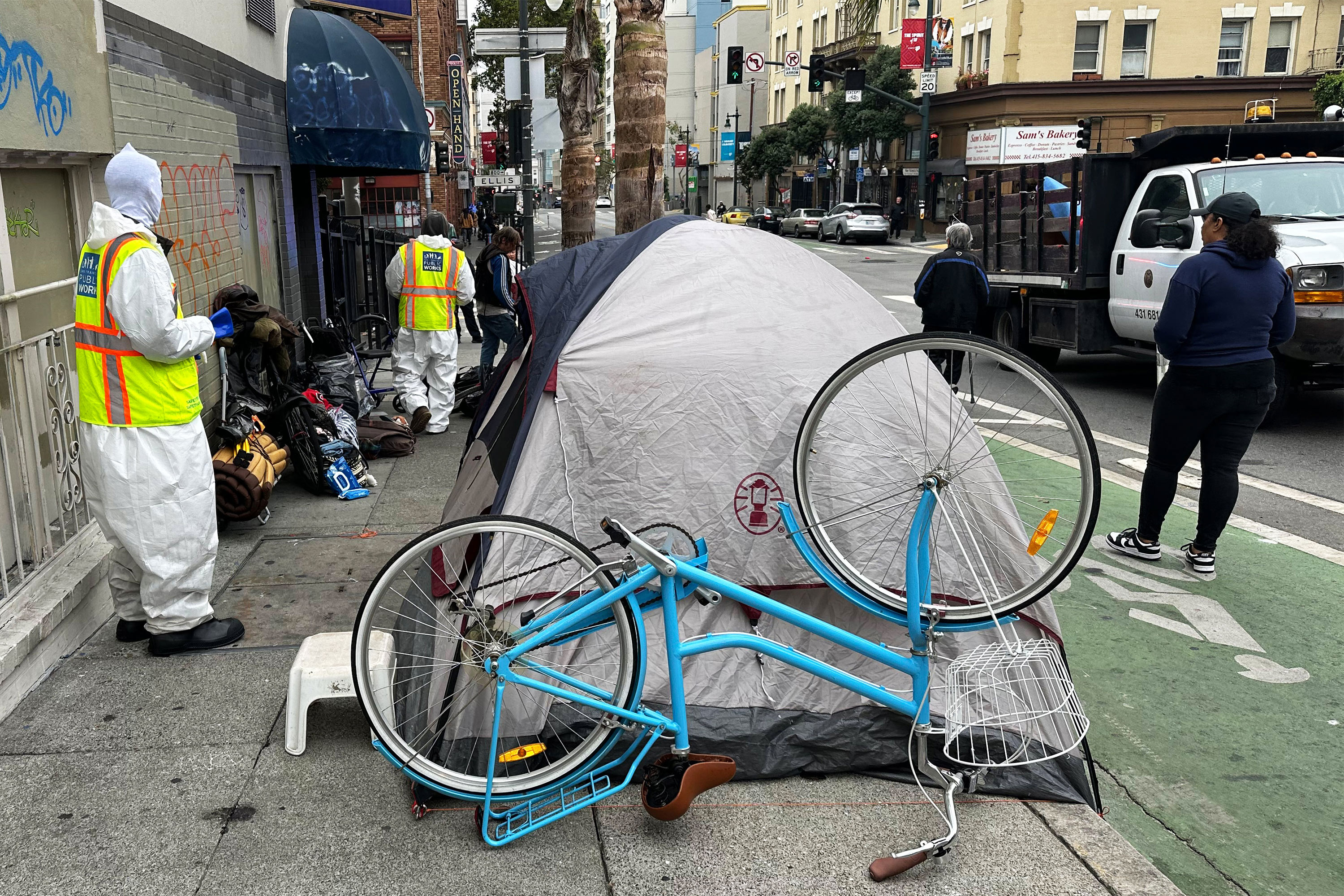
Well being care suppliers and homelessness consultants say the result’s a slow-moving well being care disaster instigated by the very Democratic politicians touting the necessity for care and companies round California, residence to extra homeless individuals than another state within the nation.
No place goes as laborious as San Francisco, a fiercely liberal metropolis that has lengthy embraced its fame as a spot the place homeless individuals may discover refuge and strong companies.
Now, case managers, housing navigators, and avenue drugs groups say weak persons are rising sicker amid the crackdown and that lots of their sufferers have merely disappeared. Others have misplaced drugs and significant paperwork like delivery certificates and Social Safety playing cards, setting again efforts to stabilize individuals with housing, psychological well being companies, and habit remedy. Entrance-line suppliers right here say the town has develop into a evident instance of homelessness coverage gone incorrect.
“All of the sweeps and arrests are doing is transferring individuals to the following sidewalk and disrupting their continuity of care. It’s an enormous waste of assets,” mentioned Shannon Heuklom, a main care supplier and an professional in avenue drugs for the San Francisco Neighborhood Well being Heart, with a clinic nestled within the coronary heart of the Tenderloin.
“Some portion of parents might find yourself in a shelter, however for probably the most half the town is simply transferring them throughout and making them extra unwell, making their psychological well being worse, making their bodily well being worse,” she mentioned.
Disrupted Care
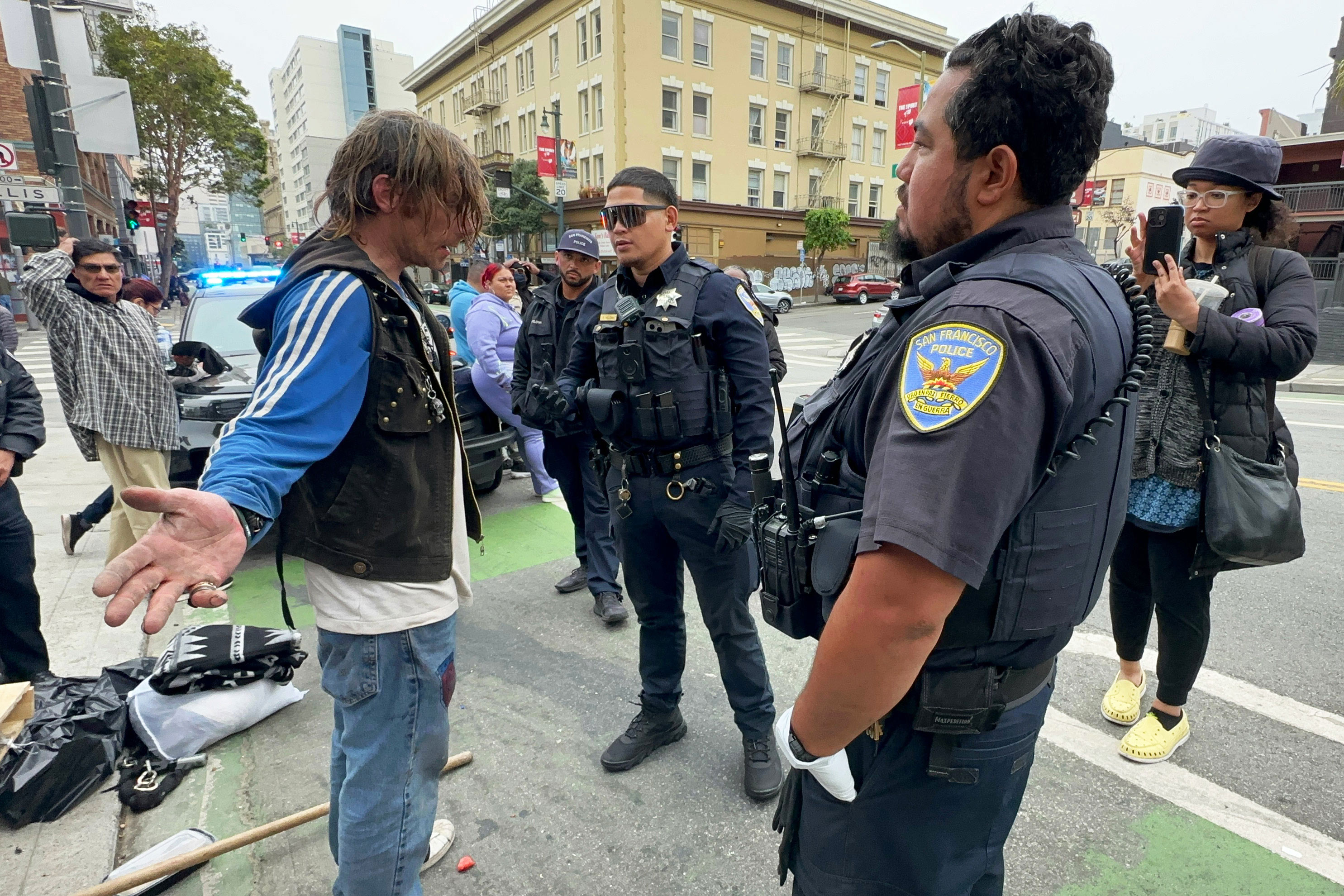
Within the Tenderloin, Douglass was frantic. Police informed him and his spouse, Jasmine Byron, and one other associate, Christina Richardson, that they may keep away from arrest in the event that they went into a large congregate shelter. However they’d should sacrifice most of their stuff, taking simply two luggage every. They’d already misplaced lifesaving drugs, together with for epilepsy, in a earlier camp clearing. And Douglass had lastly changed his ID and bronchial asthma medicine; he didn’t need extra stuff thrown away amid the chaos.
On this early August morning, Douglass opted to stick with his belongings. The trio are a part of about 70 homeless arrests in San Francisco for the reason that metropolis’s mayor, London Breed, ratcheted up cleanup operations at first of August following the Supreme Courtroom’s determination in late June, in line with San Francisco Police Division spokesperson Evan Sernoffsky.
“We’re right here to implement the regulation,” mentioned Lt. Wayman Younger, one of many 5 officers. “We get lots of complaints: Individuals can’t use the sidewalk; there’s lots of rubbish.”
Because the three have been separated and cuffed, a lady driving by caught her arms out her window and clapped, cheering the sidewalk arrest and yelled “Thanks!” A passerby in a wheelchair averted the tense standoff by rolling right into a site visitors lane, dodging automobiles as he regarded for a vacant part of sidewalk to make use of.
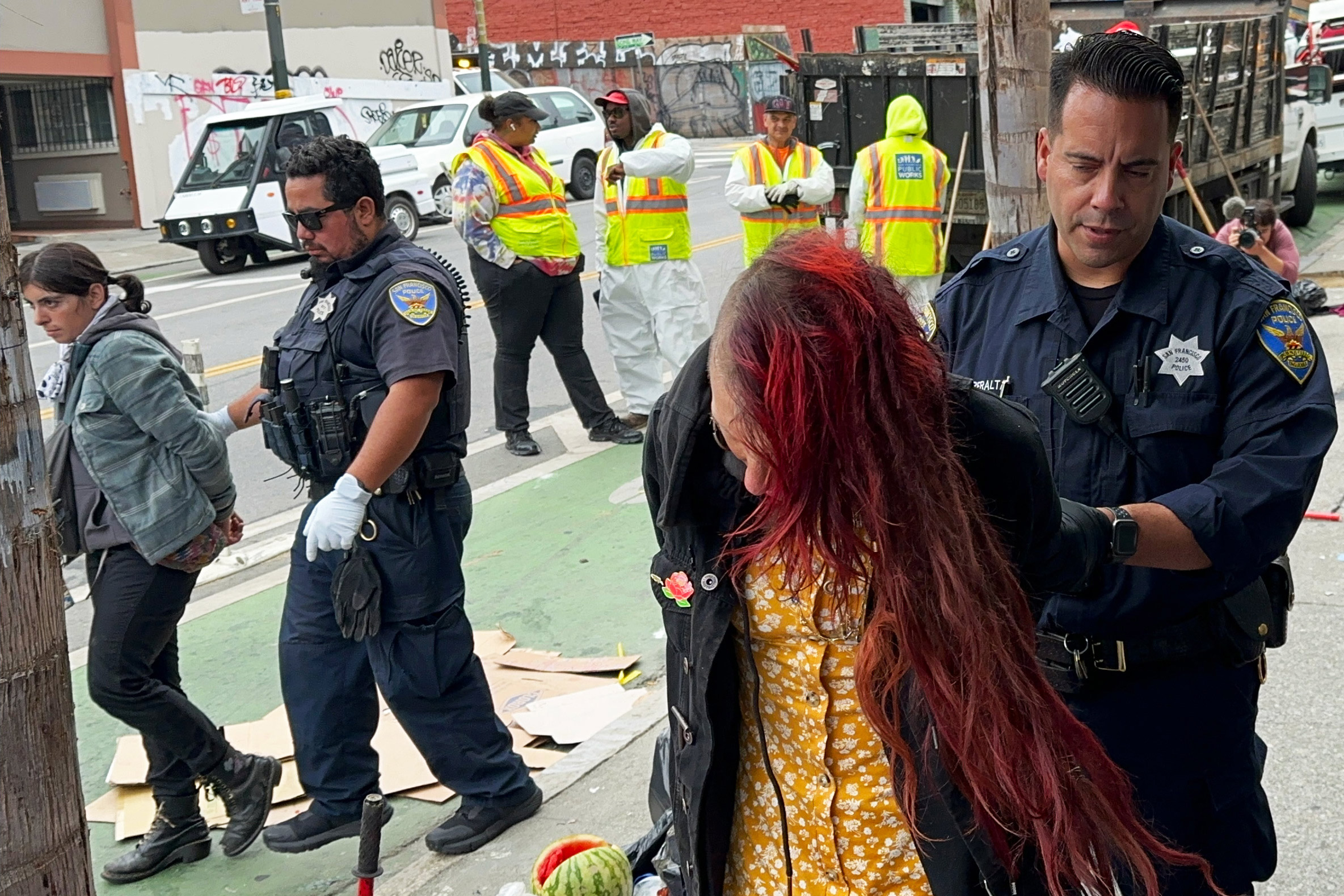
Douglass missed his housing appointment the morning after his arrest, confirmed his avenue drugs case supervisor, Justin Jackson from the San Francisco Neighborhood Well being Heart. Amid his tossed belongings have been his ID card, which is required to get into housing, so he was again in line on the clinic the following day filling out a Division of Motor Automobiles voucher type to exchange it totally free.
As a result of Douglass is homeless and on Medi-Cal, California’s model of Medicaid, he’s eligible for CalAIM companies that help homeless sufferers with discovering a everlasting place to stay, in addition to serving to to cowl safety deposits and utility payments. CalAIM additionally affords eviction prevention help, and subsequent yr California is predicted so as to add a brand new Medi-Cal profit offering as much as six months of free lease or short-term housing.
However together with his paperwork thrown away, his eligibility for housing was delayed.
Entrance-line staff at the moment are spending immense time and assets serving to individuals change valuables like drugs, Social Safety playing cards, and delivery certificates misplaced on account of sweeps. They discover sufferers are skipping routine well being care and spot an uptick in drug use, nervousness, and despair.
“That is simply making homelessness worse,” mentioned Evelyn Peña, a CalAIM care supervisor on the Mission Neighborhood Well being Heart in San Francisco.
Taylor Cuffaro, a nurse practitioner and avenue drugs supplier with the San Francisco Neighborhood Well being Heart, trudged the streets of the Tenderloin with Eli Benway, a licensed scientific social employee who gives speak remedy and different behavioral well being remedy on the road, looking for sufferers on a vibrant August afternoon.
Some wanted assist managing persistent illnesses and psychological well being circumstances. Others have been due for antipsychotic injectables that last more than capsule drugs. Some wanted refills of HIV drugs.
“Medical health insurance firms aren’t simply going to present you extra medicine,” Cuffaro mentioned. “That’s not the way it works, so individuals actually are vulnerable to dying sooner.”
A part of what’s being squandered is belief, which is significant for getting individuals off the streets. “These sweeps are simply making our job unimaginable,” Cuffaro mentioned, looking out unsuccessfully for a affected person in an alley.
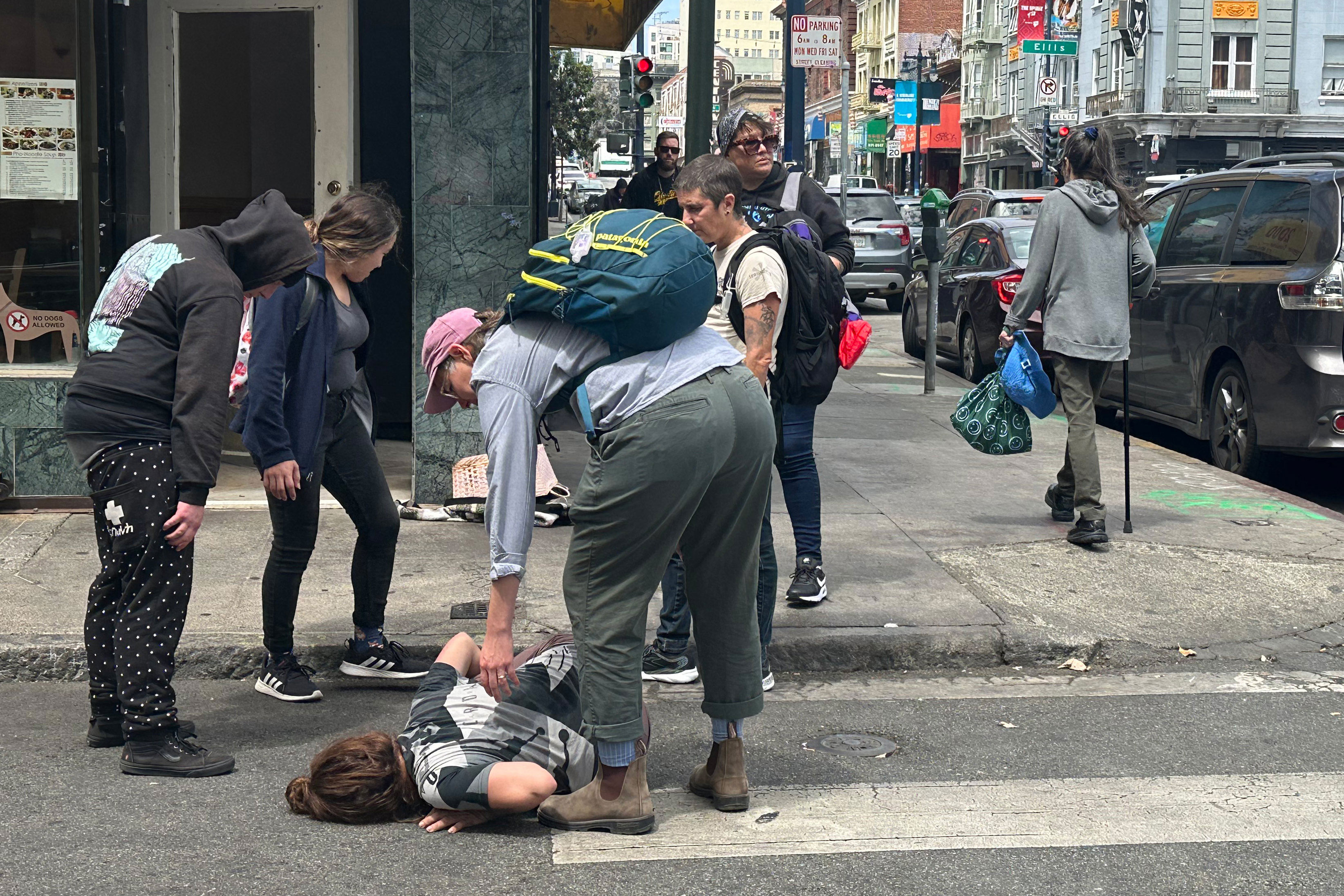
Politics of Homelessness
The statewide crackdown is enjoying out regardless of a rising physique of proof exhibiting that offering strong well being care, together with social companies and intensive case administration, can successfully transfer homeless individuals off the streets and enhance well being, whereas additionally saving taxpayer and well being care spending on expensive institutional care.
Democrats are embracing a get-tough strategy as public persistence wears skinny over the intractable disaster. Newsom’s stance shouldn’t be solely new: Throughout his tenure as San Francisco mayor, from 2004 to 2011, he spearheaded controversial homelessness concepts, together with an ordinance generally known as sit/lie, which made it unlawful to take a seat or lie on public sidewalks.
Newsom and native leaders, together with Breed, say they have to steadiness guaranteeing public security and clear streets with a humane strategy to clearing camps, whereas attempting to get individuals indoors. Breed administration officers argue that whereas some homeless individuals do settle for shelter, many are opting to remain on the streets whereas declining remedy.
“Individuals gained’t settle for shelter, and so they gained’t observe up on their medical care or behavioral well being remedy or any of that, actually because they should keep and monitor their belongings, a few of that are completely dirty and changing into a well being hazard,” mentioned David Nakanishi, a scientific social employee who heads the Breed administration’s Wholesome Streets Operation Heart, which spearheads the sweeps.
In Los Angeles, in the meantime, avenue drugs supplier Brett Feldman is shedding his sufferers amid the sweeps. “It actually undermines our housing efforts,” he mentioned.
A metropolis report launched in Could discovered that clearing camps and implementing anticamping legal guidelines that ban individuals from sleeping, sitting, or retaining belongings on sidewalks in sure delicate areas, together with college zones, parks, or freeway underpasses, shouldn’t be successfully serving to individuals into housing. After spending roughly $3 million implementing anticamping legal guidelines from 2021 to 2023, the report discovered, the town positioned simply two individuals into everlasting housing and 81% of encampment websites have been repopulated.
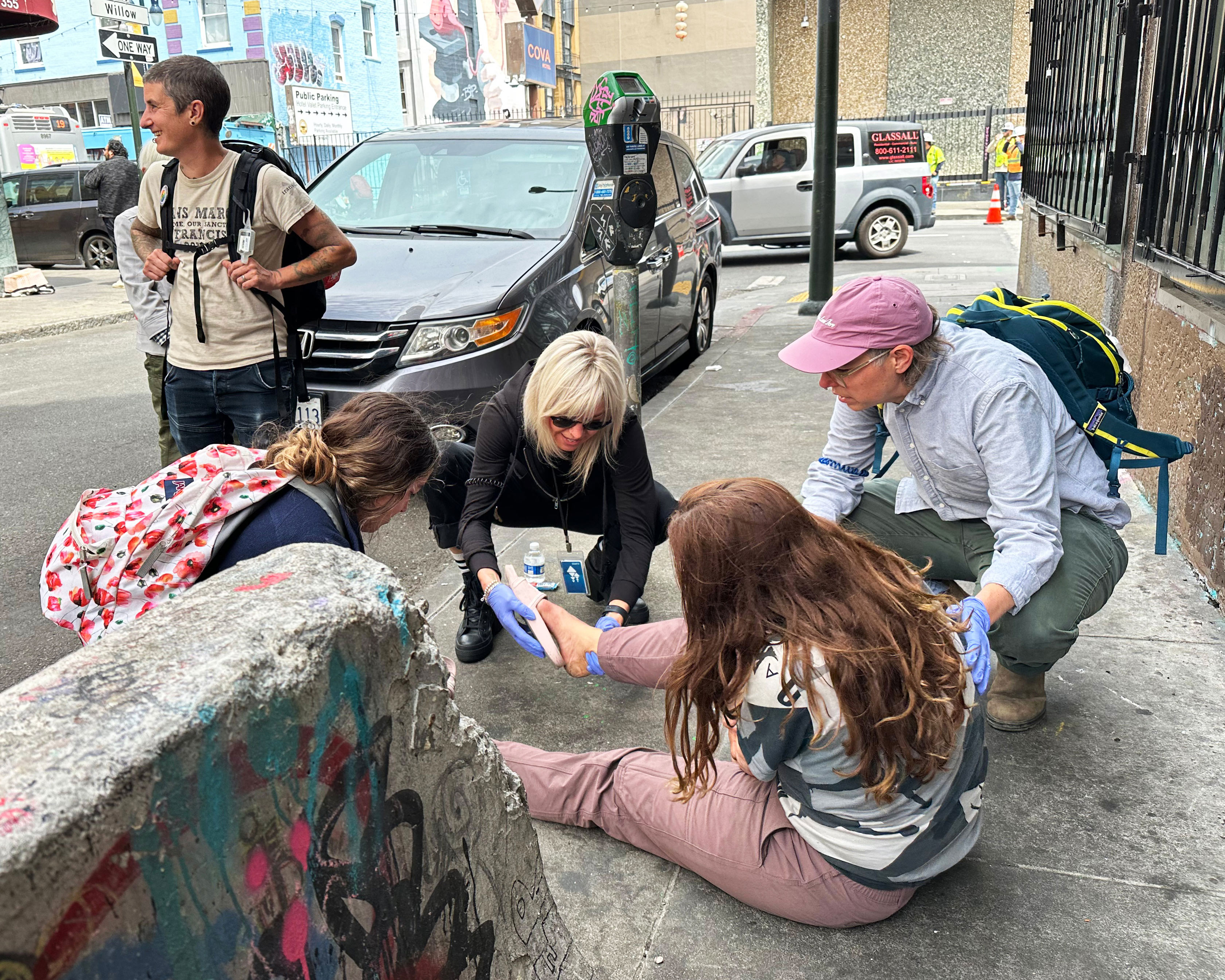
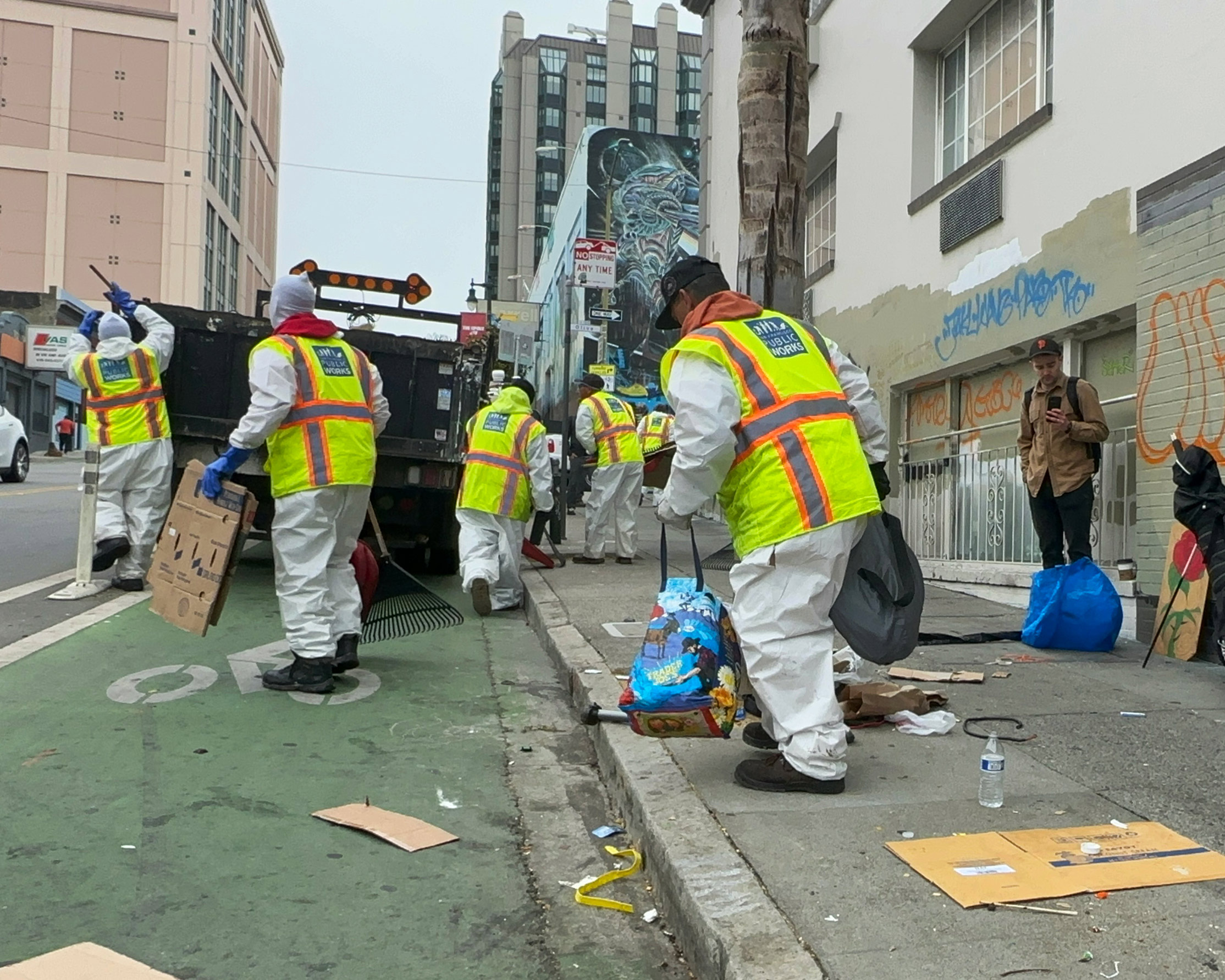
In a single central Los Angeles district the place regulation enforcement shouldn’t be aggressively implementing anticamping legal guidelines, avenue homelessness fell roughly 38% in a one-year interval from 2023 to 2024, mentioned Indu Subaiya, interim CEO for the nonprofit Healthcare in Motion, which has been housing and treating sufferers there.
“We’re beginning to really see outcomes and reductions in unsheltered homelessness,” Subaiya mentioned. “Nevertheless, in Southern California counties aggressively implementing Newsom’s government order and clearing encampments, we’re seeing our sufferers and their medical circumstances set again profoundly.”
As soon as Douglass was launched, he was again within the Tenderloin attempting to find housing and popping his tent up the road from his earlier hangout.
“Each time I attempt to get my paperwork to get housing, I get knocked backwards,” he mentioned. “I suppose the town thinks all of us should be in handcuffs.”
By the following morning, the encampment had grown twice in dimension.
Healthbeat is a nonprofit newsroom overlaying public well being revealed by Civic Information Firm and KFF Well being Information. Join its newsletters right here.
This text was produced by KFF Well being Information, which publishes California Healthline, an editorially impartial service of the California Well being Care Basis.
